

| Home | Log In | Register | Our Services | My Account | Contact | Help |
You are NOT currently logged in
dai oldenrich - 01 Sep 2006 13:32
click your browser refresh button to update charts
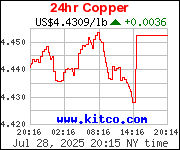
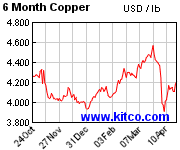
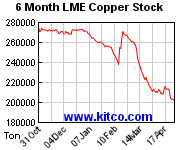
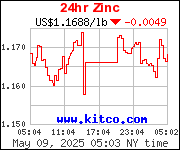
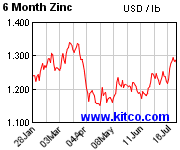
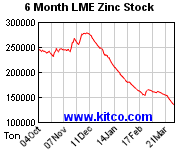
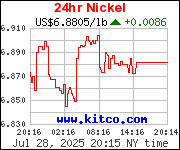
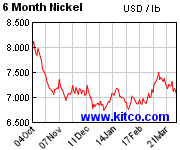
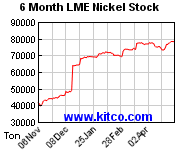
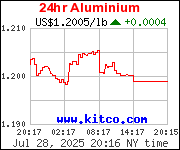
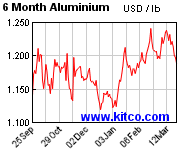
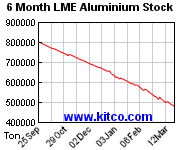
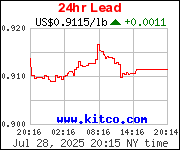
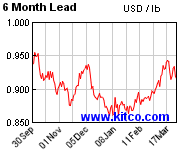
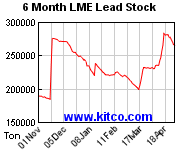
Also see: gold charts here silver charts here platinum charts here
dai oldenrich - 22 Oct 2006 08:11 - 131 of 181
The Sunday Times - October 22, 2006
Peruvian to join London's band of mining tycoons - Grant Ringshaw
A SOUTH American mining tycoon is to become the latest foreign businessman to cash in on the natural-resources boom by listing his company on the London Stock Exchange.
Eduardo Hochschild, executive chairman and controlling shareholder in the Peruvian gold and silver miner Hochschild Mining, will see his personal fortune valued at $1.6 billion (850m) by next months London debut.
Hochschild, the worlds fourth-largest producer of silver, is planning to raise $500m from the float, valuing the firm at about $2 billion. The business is 80% owned by Eduardo Hochschild. Alberto Beeck, another executive director, has a 17.6% stake.
Roberto Danino, a former prime minister of Peru and general counsel for the World Bank, is also an executive director with a 1.5% stake.
After the float, Eduardo Hochschilds stake is expected to fall to about 60%. His decision to list the companys shares on the London Stock Exchange (LSE) will be seen as another victory for London over its arch-rival New York.
The LSE and the New York Stock Exchange have been engaged in a bitter battle to attract the flotations of foreign companies.
However, New York has suffered because of the onerous requirements of the Sarbanes-Oxley Act and the risk from class-action lawsuits in America.
A host of foreign mining and metal companies are planning to come to London. These include Severstal, the giant Russian steelmaker, and Chelyabinsk Zinc, Russias largest zinc producer.
The Peruvian group is the worlds fourth-largest producer of silver and has significant interests in gold mining. Last year, Hochschild produced 10.5m ounces of silver and 233,000 ounces of gold. The groups profits are split evenly between production of these two precious metals.
Hochschild owns three mines in Peru. It also has two advanced projects in Peru and Argentina. A further two projects in Mexico are in their early stages. It has about 25 long-term development projects in Latin America in total.
Hochschild is a specialist in deep-vein underground mines, as opposed to many gold and silver mining rivals that operate open-cast mines. Deep-vein mines are typically more profitable, with Hochschilds margins running at about 50%.
The Peruvian mining giant is aiming to use the funds raised from the flotation to develop its existing projects. The group has set itself a target of doubling its combined gold and silver production by 2011 through organic growth.
However, Hochschild is also understood to be looking at a series of joint ventures and acquisitions worth between $150m and $250m each.
Hochschild was set up by Mauricio Hochschild, a German immigrant, in Chile in 1911 as a base-metals company.
After the second world war the group expanded into Bolivia and Peru. By the 1960s it had become one of the worlds largest mining groups, similar in size to Rio Tinto. However, in 1984, the South American operations were sold to Anglo American.
In the same year, Hochschild bought Anglos Peruvian interests, creating the foundations of the present group.
Hochschild is managed by an executive committee, led by Eduardo Hochschild. But the group is expected to appoint a chief executive after the flotation. The board also includes Sir Malcolm Field, a former chief executive of WH Smith, the high-street retailer.
Hochschild executives are due to meet potential investors this week.
The float is being handled by the investment banks JP Morgan Cazenove and Goldman Sachs.
dai oldenrich - 23 Oct 2006 07:07 - 132 of 181
MUMBAI - Oct 23 - (Reuters) -
India to let private firms run coal mines-report
India will allow private mining firms, including foreign ones, to enter the coal mining sector next month to help increase energy supplies in the country, the Economic Times newspaper reported on Monday.
Only power, steel and cement firms are currently allowed to own coal mines, which they operate jointly with mining firms. The new rules will allow mining firms to own and run mines, the paper said, citing unnamed sources in the coal and law ministries.
The newspaper said mining companies, including BHP Billiton, Rio Tinto and Sesa Goa, would soon be able to gain rights to mine and operate coal mines in India, boosting production.
"We are now in the final stages of drafting guidelines for allowing captive coal block allocation to private-sector mining companies too. This is expected to be notified by the month-end or in early November," the report quoted a government source as saying.
The government will invite bids from mining companies after the new policy is announced, the report said.
dai oldenrich - 23 Oct 2006 07:07 - 133 of 181
Oct. 23 (Bloomberg)
Copper Declines in Shanghai on Signs of Slowing Demand in China - By Xiaowei Li
Copper futures in Shanghai fell on concern demand for the metal used in pipes and wires is slowing in China, the world's largest consumer.
Consumption of copper in China declined in the eight months to August, the Ware, England-based World Bureau of Metals Statistics said Oct. 18. There is little sign demand for the metal is picking up in recent months, Wang Zheng, an analyst at Shanghai Continent Futures Co. said.
``Current demand for the metal, as shown by orders from users, is weaker than we expected,'' Wang said today.
Copper for delivery in December fell as much as 850 yuan, or 1.2 percent, to 70,820 yuan ($8,966) a metric ton on the Shanghai Futures Exchange, and traded at 71,160 yuan at the market's midday break.
----------------------------------------------------
TAIPEI - Oct 23 - (Reuters)
Shanghai copper down in quiet trade; LME ticks up - By Richard Dobson
Shanghai copper futures softened on Monday despite firmer London prices, as quiet turnover and relatively high prices kept speculators and investors at the sidelines.
Copper on the Shanghai Futures Exchange moved lower on Monday, with the most active December contract closed the morning session down 340 yuan, or 0.5 percent, at 71,160 yuan a tonne from Friday's close of 71,500 yuan.
"Speculators abandoned the Shanghai copper market due to small-scale movement, while hedgers quit the market because of mounting prices. Thus the trading volume is very light," said Li Rong, analyst at Great Wall Futures in Shanghai.
dai oldenrich - 23 Oct 2006 22:58 - 134 of 181
Oct. 23 - (Bloomberg)
Housing in U.S. Poised to Worsen, Derivatives Show - By Darrell Hassler and Hamish Risk
The slumping U.S. housing market is about to get a lot worse, according to traders of mortgage-backed securities and the so-called derivatives on which they are based.
The ABX index, which measures the risk of owning bonds backed by home-loans to people with poor credit, rose 30 percent since Aug. 9 to the highest since January. There are more than $500 billion of such notes outstanding.
The increase in the index shows traders expect mortgage delinquencies and foreclosures to increase at a time when the number of homes for sale as measured by the National Association of Realtors is at a 13-year high. The percentage of home-loan payments more than 60 days delinquent rose to 7.23 percent in July from 5.9 percent a year earlier, the fastest rate of increase since 1998, Moody's Investors Service said Oct. 17.
``Delinquency trends and home prices'' show a weakening real estate market, said Scott Eichel, head of credit trading for New York-based Bear Stearns & Co., the biggest underwriter of bonds backed by mortgages. ``A lot of investors that have concerns about the housing market'' are using the ABX index to speculate on a continued drop, he said.
Sales of new and existing homes probably will drop 9.4 percent to 6.76 million in 2006 from a record last year, McLean, Virginia-based mortgage buyer Freddie Mac said Oct. 10. Home sales have risen the past five years.
ABX Index
The ABX index, created by London-based Markit Group Ltd., measures the cost, or spread, of credit-default swaps based on the $565 billion of bonds secured by so-called subprime mortgages and home-equity loans. Credit-default swaps are financial instruments based on bonds and loans that are used to speculate on the ability of borrowers to repay debt. An increase in the spread indicates deterioration in the perception of credit quality; a decline suggests improvement.
The index tracks 20 asset-backed securities that contain loans rated BBB-, the lowest level of investment grade debt. Based on the index, it costs an investor $267,000 to protect $10 million of bonds against default for five years, up from $205,000 in August. The investor would get face value for the bonds in exchange for the securities should a borrower fail to adhere to the debt agreements.
`Unequivocally Bad'
``The unequivocally bad housing data we've seen'' is prompting investors to seek to profit from potential declines in mortgage-backed securities, said Greg Lippmann, the head of asset-backed trading at Deutsche Bank AG in New York who helped create the ABX indexes in January.
Contracts covering $5 billion of home-loan debt change hands daily, he said. Derivatives are contracts whose value is derived from stocks, bonds, loans, currencies and commodities, or linked to specific events such as changes in interest rates or the weather.
The housing boom spawned new types of mortgages that allowed consumers to buy homes they may not have been able to afford otherwise.
About 18 percent of all mortgages issued in the first half of the year were to borrowers considered most likely to default, such as those with high credit-card balances, up from 2.4 percent in 1998, based on data from the Mortgage Bankers Association. The Washington-based trade group's 2,700 members represent 70 percent of the home-loan business.
The amount of bonds backed by subprime loans more than doubled since 2001, according to the Bond Market Association, a New York-based trade group of more than 200 securities firms.
Worst Month
A Merrill Lynch & Co. index of debt securities derived from home-equity loans rated AA to BBB is having its worst month this year, falling 0.01 percent. They have returned 4.54 percent since the end of December. Banks and lenders such as Countrywide Financial Corp. in Calabasas, California, and Washington Mutual Inc. of Seattle typically take mortgages and package them into bonds for sale to investors. The bonds are then divided into pieces of varying risk.
All asset-backed securities, which also includes loans packaged from credit-card and student debt, have returned 4.27 percent this year on average.
More borrowers are finding it harder to meet interest payments following 17 interest-rate increases by the Federal Reserve since mid-2004.
The default rate for subprime loans rose to 7.35 percent in July from 5.51 percent a year earlier, according to investment bank Friedman Billings Ramsey Group Inc. in Arlington Virginia.
Nine percent of all subprime loans made in 2006 may default within five years, the worst performance since at least 1998, Glenn Schultz, head of asset-backed securities at Charlotte, North Carolina-based Wachovia Corp., said in an Oct. 17 report.
`More Visibility'
``People have a little more visibility on the slowdown than they did two or three months ago,'' said Andrew Chow, who manages $5.5 billion of asset-backed securities and credit-default swaps at Seneca Capital Management in San Francisco.
Bill Gross, manager of the world's biggest bond fund at Pacific Investment Management Co. in Newport Beach, California, forecasts the housing slump will cause the economy to slow and force the Fed to lower interest rates to 4.5 percent next year. The central bank's target for overnight loans between banks is 5.25 percent. Pimco is a unit of Munich-based Allianz SE.
The National Association of Home Builders/Wells Fargo said on Oct. 17 that its index of builder confidence this month rose to 31 from 30 in September, the first increase in a year.
Housing starts in September rose to an annual rate of 1.772 million from a 1.674 million pace in August, the Commerce Department in Washington said Oct. 18. The median estimate of 61 economists surveyed by Bloomberg News was for a decline to an annual rate of 1.64 million.
Falling Prices
Even with the gains, the National Association of Realtors this month predicted prices of new homes may fall for the first time in 15 years. The trade group on Oct. 11 estimates that the median price of a new U.S. home probably will drop 0.2 percent to $240,500. The inventory of homes on the market rose to a record 3.92 million, the group said Sept. 25.
Most credit-default swap trading is in securities rated BBB or BBB- because they are the most volatile and have the greatest chance to be profitable, said Jack McCleary, head of asset-backed trading for UBS AG in New York.
Subprime mortgages with those credit ratings historically have had losses of about 5 percent of the loan value, McCleary said. Some investors are betting that losses may increase to 12 to 14 percent in the next three years, which could exponentially increase value of credit-default swaps, he said.
``In effect, it's a lottery ticket,'' he said.
dai oldenrich - 23 Oct 2006 22:59 - 135 of 181
Oct. 23 - (Bloomberg)
Gold Falls Most in Two Weeks as Dollar Climbs, Crude Oil Drops - By Pham-Duy Nguyen
Gold in New York fell the most in two weeks as a gain in the value of the dollar against the euro reduced the metal's appeal as an alternative investment.
Gold, sold in dollars, generally moves in the opposite direction of the U.S. currency, which advanced today on expectations interest rates in the U.S. will remain higher than Europe's. A drop in oil prices also reduced the metal's appeal as a hedge against inflation.
``With the stronger U.S. dollar and lower oil prices, gold's going to have a problem holding on to $600,'' said Mike Sander, a commodity broker at Altavest Worldwide Trading Inc. in Mission Viejo, California. ``There's less of an inflationary risk.''
Gold futures for December delivery tumbled $13.50, or 2.3 percent, to $582.90 an ounce on the Comex division of the New York Mercantile Exchange, the biggest percentage drop since Oct. 4. Prices still are up 24 percent from a year ago.
A futures contract is an obligation to buy or sell a commodity at a set price for delivery by a specific date.
Interest-rate futures indicate a 12 percent chance the Fed will raise its benchmark rate to 5.5 percent from 5.25 at its Jan. 31 meeting, compared with a 46 percent likelihood of a cut signaled on Sept. 25.
The U.S. central bank halted a two-year cycle of raising rates at its August meeting. Gold is up 13 percent this year, and the euro has climbed 5.9 percent against the dollar.
Gold also fell as oil dropped for a second straight day on speculation the Organization of Petroleum Exporting Countries won't cut production as much as members had planned.
`Benign' Inflation Outlook
``The inflation outlook is fairly benign,'' said David Thurtell, an analyst at BNP Paribas in London. ``Investor demand will not be as strong as it has been.''
Gold has slumped 20 percent from a 26-year high of $732 an ounce in mid-May. Oil prices have dropped 25 percent from a record $78.40 in July.
Some investors buy gold when energy expenses climb. Gold futures reached a record $873 an ounce in January 1980 when oil costs doubled in a year, sparking a surge in the inflation rate.
Hedge-fund managers and other large speculators reduced their net-long position in Comex gold in the week ended Oct. 17 to the lowest in more than a year, Commodity Futures Trading Commission data showed on Oct. 20. Speculative long positions, or bets that prices will rise, outnumbered short positions by 61,259 contracts, down 1.9 percent from a week earlier.
``There seems little sign of investors and speculators wanting to rebuild long positions,'' John Reade, an analyst at UBS AG in London, said in a report.
dai oldenrich - 23 Oct 2006 23:01 - 136 of 181
Oct. 23 - (Bloomberg)
Copper Drops in N.Y. as U.S. Housing Slowdown May Reduce Demand - By Chanyaporn Chanjaroen
Copper fell to the lowest in more than a week in New York as a slowdown in the U.S. housing market spurred speculation that demand for the metal will be curbed.
Sales of new and existing homes probably will drop 9.4 percent to 6.76 million in 2006 from a record last year, McLean, Virginia-based mortgage buyer Freddie Mac said Oct. 10. Home sales have risen in the past five years, contributing to a quadrupling of copper prices. As much as 400 pounds of copper is used in an average home in the U.S. the world's second-largest user of the metal.
``Skepticism has increased,'' Ulrich Steiner, an analyst at Bank Leu AG in Zurich, said in an interview today. ``Market participants are somewhat nervous. The risk is rather to the downside.'' The U.S. housing market is ``important'' to copper, he said.
Copper futures for delivery in December dropped 1.1 cents, or 0.3 percent, to $3.451 a pound on the Comex division of the New York Mercantile Exchange, the lowest closing price for a most-active contract since Oct. 13. Prices gained 1.4 percent last week. A futures contract is an obligation to buy or sell a commodity at a fixed price for a specific delivery date.
Copper for delivery in three months on the London Metal Exchange gained $5 to $7,565 a ton as of 6:21 p.m. local time. It has declined 14 percent from a record $8,800 on May 11.
The slumping U.S. housing market is about to get a lot worse, according to traders of mortgage-backed securities and the so-called derivatives on which they are based.
The ABX index, which measures the risk of owning bonds backed by home-loans to people with poor credit, has risen 30 percent since Aug. 9 to the highest since January. The increase shows traders expect mortgage delinquencies and foreclosures to increase at a time when the number of homes for sale as measured by the National Association of Realtors is at a 13-year high.
Weakening Market
``Delinquency trends and home prices'' show a weakening real estate market, said Scott Eichel, head of credit trading for New York-based Bear Stearns & Co., the biggest underwriter of bonds backed by mortgages.
Recent economic data showing a slowdown in the U.S. economy aren't ``compelling enough'' for investors to sell short on copper, said Adam Rowley, London-based analyst at Macquarie Bank Ltd.
``If you go are short, you are counting on a significant slowdown in the economy,'' Rowley said. ``The information we've got isn't compelling enough.''
The low inventory of copper on the LME will support prices, the analyst said.
Inventory at warehouses monitored by the LME gained 800 metric tons, or 0.7 percent, to 113,075 tons, the LME said today in a daily report. Stockpiles are equal to less than three days of global demand. Consumption will beat output by 101,000 tons this year, Gold Sachs Group Inc. said last month.
Tin
LME tin stockpiles dropped 680 metric tons, or 5.4 percent, to 11,970 tons, the exchange said. The decline is the largest since July 26, 2005. Tin for delivery in three months gained $225, or 2.2 percent, to $10,375 a ton.
Aluminum dropped $6 to $2,712 a ton and lead increased $12 to $1,512. Nickel gained $350, or 1.1 percent, to $32,400 a ton and zinc dropped $50 to $3,920 a ton.
dai oldenrich - 24 Oct 2006 07:07 - 137 of 181
Dow Jones Newswires - Tuesday, October 24, 2006
Copper Tipped To Stay Quiet Today
Little to suggest copper will break out of recent sluggish trading mode, as speculators continue to focus on tighter nickel, zinc markets; meanwhile, weaker oil, gold markets keep other players wary, despite fairly upbeat outlook for red metal consumer demand. "Copper lacks incentives these days and should be in sideways trading today in Shanghai," says Maike Group executive VP Haihua Shen; "it's a quiet market." LME 3-month trades last at $7,570/ton, down $25 on London PM kerb.
dai oldenrich - 24 Oct 2006 07:07 - 138 of 181
Oct. 24 (Bloomberg)
Copper Futures Little Changed in Shanghai Amid Growth Concerns - By Xiaowei Li
Copper futures in Shanghai were little changed after falling yesterday amid concern that demand is slowing for the metal used to make pipes and wires.
Copper fell to its lowest in more than a week in New York yesterday as a slowdown in the U.S. housing market spurred speculation orders for the metal will decline. There's been little sign in recent months that copper demand in China is picking up, said analyst Wang Zheng.
``Current demand for the metal, as shown by orders from users, is weaker than we expected,'' Shanghai Continent Futures Co.'s Wang said. ``From the funds perspective, buying from investment funds seem to have no continued momentum due to not-so-good returns in the near term.''
Copper for delivery in December on the Shanghai Futures Exchange traded at 71,040 yuan ($8,989) a metric ton at 11:29 a.m. local time, 80 yuan lower than yesterday's close. Earlier, the contract rose as much as 170 yuan to 71,290 yuan and fell as much as 90 yuan to 71,030 yuan.
Metal for delivery in three months on the London Metal Exchange rose $25, or 0.3 percent, to $7,570 at 11:26 a.m. Shanghai time.
dai oldenrich - 24 Oct 2006 13:51 - 139 of 181
Oct. 24 (Bloomberg)
Copper Drops in London as LME Stockpiles Jump Most in 6 Months - By Chanyaporn Chanjaroen
Copper dropped for a third straight session in London as stockpiles of the metal used in wires and pipes jumped the most in six months, indicating a supply squeeze may be easing.
Inventory at warehouses monitored by the London Metal Exchange gained 7,750 metric tons, or 6.9 percent, to 120,825 tons, the LME said today in a daily report. Still, stockpiles are equal to less than three days of global demand.
``The physical market is very well-supplied,'' Andrew Silver, a trader at London-based Natexis Commodity Markets, said by telephone. ``No one bothers to buy the metal these days.'' Natexis is one of 11 companies that trade on the LME floor.
Copper for delivery in three months on the LME dropped $60, or 0.8 percent, to $7,485 a ton as of 10:37 a.m. local time. It has declined 2.3 percent in the past three sessions. The three- month contract traded at a record $8,800 a ton on May 11.
Most of today's increases in LME copper stockpiles were recorded in Singapore, where inventory rose by 7,025 tons. Singapore, Asia's trading hub, is the leading point of export to China, the world's largest user of copper, and southeast Asia.
Stockpiles rose even as output at producing companies fell. BHP Billiton Ltd., the world's largest mining company, said today production dropped 19 percent to 249,900 tons in the quarter ended Sept. 30 after workers at the Escondida mine in Chile stopped work for four weeks in August and September. Scheduled maintenance at Olympic Dam in Australia also cut output.
Lead, Aluminum
Maintenance work reduced BHP Billiton's zinc and lead production in Australia, the Melbourne-based company said. Lead output fell 25 percent and zinc 28 percent. BHP Billiton owns the Cannington site in Australia, the world's largest lead mine.
Lower production at Cannington sent lead to a record $1,550 a ton on Oct. 16. Prices dropped $7, or 0.5 percent, to $1,505 a ton today.
Aluminum declined after Norsk Hydro ASA, the world's fourth-largest producer last year, said demand will decline in 2007 as economic growth slows.
``The primary aluminum market is expected to move from a moderate deficit in 2006 to a moderate surplus in 2007,'' the company said in a statement accompanying its third-quarter earnings. ``Key economic indicators signal lower global growth in 2007.''
OAO Russian Aluminum, creating the world's largest metal producer in a merger OAO Sual Group, said yesterday prices will stay at about $2,300 to $2,600 a ton for ``a number of years'' as supplies remain tight.
Aluminum fell $22, or 0.8 percent, to $2,688 a ton.
Among other metals on the LME, zinc dropped $40, or 1 percent, to $3,880 a ton and tin was unchanged at $10375. Nickel declined $250, or 0.8 percent, to $32,150 a ton.
dai oldenrich - 25 Oct 2006 07:14 - 140 of 181
FT.com - By Chris Flood
Dealers said base metals trading was lacklustre, suffering from weak volumes amid a reluctance to open new positions ahead of the Federal Reserve meeting on US interest rates. Trading is expected to remain quiet this week before the release of US third quarter GDP data on Friday.
Copper eased 0.8 per cent to $7,485 a tonne. Inco, the Canadian miner, said copper production in the third quarter was 27,668 tonnes, flat compared to the same period last year and lower than expected, mainly due to strike action at Voiseys Bay mine.
Codelco has begun wage negotiations early with union leaders from its largest division Codelco Norte which produced almost 1m tonnes of copper last year, alomost half of the Chilean state companys output.
Nickel retreated 0.5 per cent to $32,250 a tonne after it hit a record $32,700 in the previous session.
Zinc edged 0.4 peer cent lower to $3,905 a tonne in spite of a further fall in of 2,525 tonnes in LME inventories, shrinking rapidly towards the psychological level of 100,000 tonnes from 117,375 tonnes currently.
dai oldenrich - 25 Oct 2006 07:16 - 141 of 181
Oct. 25 (Bloomberg)
Gold Falls in Asian Trade as Charts Indicate More Drops Likely - By Chia-Peck Wong
Gold fell in Asian trade as charts some traders use to predict prices indicate that more declines may be in store.
Speculators and traders are selling gold after the bullion failed to break past $600 an ounce twice this month. That level is a so-called resistance on charts where sell orders cluster.
``Gold's falling on technical reasons, $600 looks to be a top so in the short-term, gold's outlook isn't very good,'' Yang Qing, the chief gold trader at the Bank of China Ltd., said by phone from Beijing.
Gold for immediate delivery fell as much as $2.35, or 0.4 percent, to $584.10 an ounce and traded at $584.39 at 11:55 a.m. Singapore time.
Traders are awaiting the outcome of the two-day meeting of Federal Open Market Committee of the U.S. Federal Reserve that starts today. Any comment from the Fed saying inflation is still a concern would help gold prices, Bank of China's Yang said.
All 106 economists surveyed by Bloomberg expect the Fed to hold its target rate at 5.25 percent today. Minutes from the Fed's September meeting, released Oct. 11, showed the central bank saw a ``substantial risk'' inflation may not recede.
``The gold market is likely to remain range-bound ahead of the Fed meeting,'' Darren Heathcote, head of trading at Investec Australia, said by phone from Sydney.
Gold futures for December delivery fell 10 cents to $587.50 an ounce in after-hours trading on the Comex division of the New York Mercantile Exchange at 11:48 a.m. Singapore time.
dai oldenrich - 25 Oct 2006 07:17 - 142 of 181
Oct. 25 (Bloomberg)
Copper Futures in Shanghai Drop Amid Concerns Growth Will Slow - By Xiaowei Li
Copper futures in Shanghai fell for a third day amid concern that the rate of growth in the world's fourth-largest economy is slowing, curbing demand for the metal used to make pipes and wires.
China's economic growth may be less than 10 percent next year as government curbs on investment and liquidity take effect, the National Development and Reform Commission's Academy of Macroeconomic Research said in a report today. China's economic expansion slowed for the first time in a year to 10.4 percent in the third quarter, after reaching a decade-high of 11.3 percent in the second quarter.
``The newly formed consensus on a slowing economy in 2007 is weighing on copper,'' Li Xun, a trader at Shanghai Continent Futures Co., said today. ``Investment funds are taking a more cautious approach, and have either suspended buying or switched to taking short positions.''
So-called short positions are bets that prices will fall.
Copper for delivery in December on the Shanghai Futures Exchange declined as much as 520 yuan, or 0.7 percent, to 70,280 yuan ($8,927) a metric ton. The contract traded at 70,500 yuan at the market's midday break.
Some investors were also reluctant to buy copper ahead of today's policy statement from the Federal Open Market Committee, which sets interest rates at the U.S. central bank, Li said.
While interest rate are expected to remain unchanged at 5.25 percent, the accompanying statement, due at about 2:15 p.m. Washington time, will give the bank's outlook on growth and inflation in the world's largest economy.
Copper for delivery in three months on the London Metal Exchange gained $25, or 0.3 percent, to $7,520 a ton at 11:29 a.m. Shanghai time. The contract yesterday fell $50, or 0.7 percent, to $7,495.
dai oldenrich - 27 Oct 2006 07:37 - 143 of 181
Oct. 27 (Bloomberg)
Gold Falls in Asia as Dollar Gains, Reducing Investment Appeal - By Feiwen Rong
Gold declined in Asia for the first session in four as the dollar strengthened against yen, diminishing the metal's appeal as an alternative investment.
The dollar rose as much as 0.3 percent against the yen on deflation concern in Japan and speculation the U.S. Federal Reserve will keep borrowing costs at a 5 1/2-year high for the rest of the year.
``The dollar is quite stable at the moment and that's bearish for the gold,'' Ellison Chu, manager of precious metals at Standard Bank Asia Ltd. said by phone from Hong Kong today.
Gold for immediate delivery declined as much as $2.5, or 0.4 percent, to $594.65 an ounce and traded at $595.98 at 13:11 a.m. Singapore time.
A stronger dollar makes gold less appealing versus other dollar-denominated assets such as stocks and bonds.
Still, gold may rebound because the Federal Reserve officials' latest comments on U.S. economy and interest rates ``will cause some weakness'' in dollar, said Rowan Menzies, chief commodity analyst at Commodity Warrants Australia in Sydney.
The interest rate differential between the U.S. and the euro-zone is likely ``to narrow further,'' Menzies said.
Crude Oil
Bullion also suffered today due to the prospect of bearish crude oil prices, said Mao Jian, gold trader with Bank of China in Beijing. Gold usually becomes a less appealing hedge against inflation when oil prices drop.
Crude oil for December delivery dropped as much as 16 cents, or 0.3 percent, to $60.20 a barrel in after-hours electronic trading on the New York Mercantile Exchange. Oil has fallen partly on signs pre-winter stockpiles in the U.S., the world's biggest oil consumer, are sufficient.
Gold for delivery in December declined as much as $2.80, or 0.5 percent, to $597 an ounce in after-hours electronic trade on the Comex division of the New York Mercantile Exchange. The contract traded at $598.60 at 12:53 a.m. Singapore time. The precious metal reached a 26-year high of $730.40 on May 12 as oil prices climbed to a record.
dai oldenrich - 27 Oct 2006 07:39 - 144 of 181
Metals Place - 26 October 2006
China's imported iron ore prices drop by 7.2 percent
China's imported iron ore prices dropped by 7.2 percent year-on-year to reach 62.7 U.S. dollars per ton on average in the first three quarters, statistics with the China Iron and Steel Association (CISA) show.
Analysts attributed the decrease to the slowdown of China's imports of iron ore.
China imported 247 million tons of iron ore in the first nine months, up a hefty 24.2 percent from a year earlier, but down 7 percentage points in growth rate, and meanwhile, this is the first time since 2003 that the import growth has dipped under the 30 percent bar, said Luo Bingsheng, CISA's vice chairman.
"The prices are declining because the imports of iron ore are turning to a moderate growth from a fast growth, which were influenced by the steady growth of domestic iron ore output," he told an ongoing international symposium on the iron raw material in Qingdao, east China's Shandong Province.
In the first three quarters, China produced more than 400 million tons of iron ore, up 37 percent year-on-year, and the domestic prices have gone below the imported prices since May, CISA statistics show.
As a result in August, domestic steel businesses purchased iron ore from domestic mines 2.56 times that in January, statistics show.
After iron ore prices surged 71.5 percent last year, costing China the world's largest iron ore importer an additional 570 million U.S. dollars, the country has been demanding a bigger say in setting global benchmark prices.
China has been very active in negotiations with top international providers Companhia Vale do Rio Doce, BlueScope and Hammersley Iron. It only reluctantly agreed to a further 19 percent rise in iron ore prices this year.
The symposium is regarded as a warming up of a fresh round of international iron ore prices negotiation, which attract great attention of the world iron and steel industry.
More than 40 Chinese iron and steel companies including Shanghai-based Baosteel as well as the world top three iron ore providers Australian BHP Billiton, Rio Tinto and Brazilian Vale do Rio Doce attended the symposium.
But the executives of the foreign iron ore providers declined to comment on the iron prices next year, only saying that they are optimistic about China's steel market and iron ore imports. They also predicted a gap between demand and supply in China.
Lu Jianhua, director of China's Ministry of Commerce's Foreign Trade Department, did not think imported iron ore prices would continue to rise, saying that past four straight years of increase had made mines gain huge profits but left steel businesses earning little or even suffering losses.
"It is not in the interests of the two sides of demand and supply," he said.
Lu predicted that China's total iron ore imports for the year would be around 320 million tons, up 20 percent from a year earlier but down 12 percentage points in growth rate.
"Chinese steel businesses should actively participate in the global iron ore pricing and it is also justified for the Chinese government to pay attention to this, because iron ore is the major raw material of iron and steel industry, which concerns the whole of national economy," he said.
dai oldenrich - 27 Oct 2006 07:40 - 145 of 181
Oct. 27 (Bloomberg)
Copper Futures in Shanghai Decline Amid Concern Growth May Slow - By Xiaowei Li
Copper futures in Shanghai fell on concern the rate of economic growth in China and the U.S. is slowing, curbing demand for the metal that is used to make pipes and wires.
U.S. third-quarter growth, data on which is set for release later today, was 1.8 percent, Daiwa Securities America Inc. forecast, compared with 2.6 percent in the previous quarter. China's may grow less than 10 percent next year as the government curbs investment, the National Development and Reform Commission's Academy of Macroeconomic Research said this week.
``A slowing economy in 2007, as forecast by many, is weighing on copper,'' said Wang Zheng, a trader at Shanghai Continent Futures Co. Some investors were reluctant to take positions before the release of the U.S. data, he said.
Copper for delivery in December on the Shanghai Futures Exchange fell as much as 600 yuan, or 0.9 percent, to 70,170 yuan ($8,895). The contract traded at 70,360 yuan at the market's midday break.
Copper for delivery in three months on the London Metal Exchange gained $40, or 0.5 percent, to $7,490 a ton at 12:18 p.m. Shanghai time. The contract had fallen for the five previous trading sessions.
dai oldenrich - 27 Oct 2006 07:49 - 146 of 181
Dow Jones Newswires - Friday, October 27, 2006
Nickel May Be Overpriced On Easing Risk
LME 3-month nickel last at $30,500/ton, up $150 vs London PM kerb, recouping a little of nearly 4% overnight loss driven by 1,086-ton increase in warehouse inventories, bucking recent stock downtrend. "Inventories remain at very low levels by historical standards but nickel is still trading at a super premium price - perhaps too much given physical delivery problems look less likely to be repeated," says Australia's CBA.
dai oldenrich - 27 Oct 2006 08:13 - 147 of 181
Business Report - October 27, 2006
The commodity bull run is still in its early stages - By Bruce Tinney
The recent major themes of earnings growth, extraordinary cash flow and corporate activity should remain in place for the resources sector.
Strong, concerted growth in global industrial production has been the driving force behind the strength in commodity prices for the past three years.
Chinese industrial production, which grew at around 10 percent a year during the late 1990s, stepped up a gear to 20 percent. At the same time, Group of Seven (G7) industrial production recovered from the weakness in 2002, growing at an above-trend rate since 2004.
We are in the early stages of a long-term bull market for commodities, which should progress as Asia moves up the development curve. The per capita consumption of commodities for China and India is well below that of developed economies.
Recently, however, the G7 leading indicator has turned down, and globally we are now at the mature end of the current business cycle.
Historically, metal prices have declined when the US Federal Reserve stopped raising interest rates. Oil prices have already corrected, and base metals are expected to follow. It is interesting that the price:earnings ratio of BHP Billiton, the largest miner in the world, is 11.5 times.
This is the same rating on which the company traded at the start of this commodity cycle early in 2003. In other words, the market is rating the company as if this is the end of the cycle, and earnings have peaked. No recognition is being awarded for its extraordinary cash flows, management initiatives, portfolio positioning or project pipeline.
The surge in demand for commodities followed years of underinvestment in production capacity, consequently new supply has simply failed to meet demand, as evidenced by falling metal inventories.
The poor supply-side response is not a short-term phenomenon; as capital and operating costs are rising and quali- fied people are in short supply.
Consequently, a return to previous trough price levels for commodities is not anticipated and the major themes for the mining industry should remain in place. The rand will continue to weaken, acting as a hedge against any dollar commodity price weakness.
At the half-year, the resource companies reported year-on-year earnings growth in excess of 40 percent.
While earnings growth momentum for the diversified mining sector should peak in the first half of 2007, forward earnings growth for the platinum and gold producers could be substantial, even at lower metal prices, and forward price:earnings multiples are well below historical averages.
The feature of the mid-year reporting season was the high level of free cash flow, and resulting strength of the balance sheets for the resource firms.
Over the next 18 months, mining companies should continue to generate above-normal levels of discretionary cash flow at a time when balance sheets are relatively ungeared and mining projects are in short supply.
The excess cash should flow back to shareholders via lower dividend cover, share buy-backs, or special dividends.
The corporate activity stage of this economic cycle is under way, with some large deals, including CVRD's $15.16 billion (R114 billion) cash offer for Canadian mining house Inco.
In the absence of greenfields investments, there should be further consolidation of the industry.
Beneficiaries of corporate action could include Kumba, and some of the smaller platinum miners.
# Bruce Tinney is a resources analyst at BoE Private Clients
maddoctor - 27 Oct 2006 09:38 - 148 of 181
thanks once again dai for your thread
dai oldenrich - 28 Oct 2006 08:12 - 149 of 181
Glad to be of assistance maddoctor! Happy hunting!!
dai oldenrich - 28 Oct 2006 08:12 - 150 of 181
Oct. 27 (Bloomberg)
Copper May Decline Next Week; Supply Squeeze Eases - By Chanyaporn Chanjaroen
Copper may drop next week after increases in stockpiles worldwide eased a supply squeeze.
Inventory of the metal used in wires and pipes tracked by commodity exchanges in London, New York and Shanghai jumped to 187,079 metric tons, the highest in four weeks. Eight of 11 analysts, investors and traders surveyed by Bloomberg yesterday and Oct. 25 forecast copper will decline next week. Two expect a gain and one little change.
``With copper continuing to flow into the terminal markets, warehouses and domestic business, I'll go with `down,''' said Warren Gelman, president of St. Louis-based trading company Kataman Metals Inc.
Copper for delivery in three months on the London Metal Exchange rose $70, or 0.9 percent, to $7,520 a metric ton as of 11:47 a.m. local time. It has fallen 0.3 percent this week.
On the Comex division of the New York Mercantile Exchange, copper for December delivery gained 0.2 percent to $3.405 a pound in after-hours electronic trading. Copper for delivery in December on the Shanghai Futures Exchange fell 0.7 percent to close at 70,310 yuan ($8,912) a ton. Chinese prices include 17 percent tax and 2 percent duty.
The extra cost of buying copper for immediate delivery on the LME relative to that for three-month delivery narrowed to $7 a ton on Oct. 26, from more $20 a ton a week ago, indicating an easing supply squeeze. In a market with adequate supplies, longer-dated contracts are usually more expensive than nearby ones to reflect the cost of storage and interest.
Supply Shortfall
Rising stockpiles probably will help copper users fill a supply shortfall forecast at 52,000 tons this year by Goldman Sachs Group Inc. Inventory has increased even as production declined at the world's two largest copper mines.
BHP Billiton, the world's largest miner, said output fell 19 percent in the quarter ended Sept. 30, from a year ago as workers at the Escondida mine in Chile went on strike for four weeks in August. Freeport-McMoRan Copper & Gold Inc. said on Oct. 17 that third-quarter output dropped 11 percent from a year earlier at its Grasberg mine in Indonesia, the world's second- largest copper mine after Escondida.
The shortage of copper may improve in the first quarter, Michael Lewis, head of commodities research in London at Deutsche Bank AG, Germany's largest bank, said by telephone. An economic slowdown in the U.S. will curb demand, he said. The U.S. is the world's second-largest copper consumer, after China.
``There's not much tightening in the copper market from now onwards,'' Lewis said.